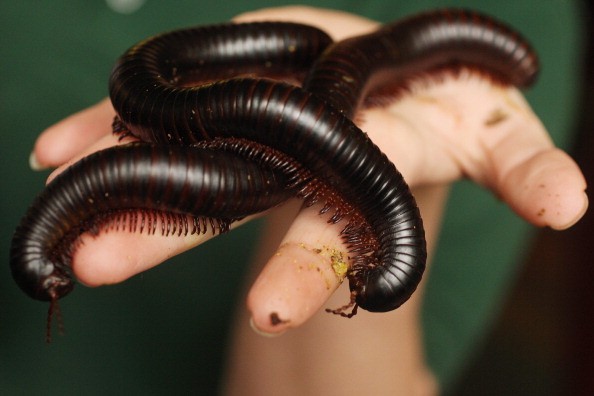Scientists have discovered the first millipede with more than 1,000 legs this week. No millipede with more than 750 legs has ever been discovered before.

Millipede with 1,306 Legs
Paul Marek and his team found the millipede 60 meters under the ground in a drill hole meant for exploring minerals in the mining region of Australia's Eastern Goldfields Province, according to Phys.org.
Eumillipes persephone, a new species, with 1,306 legs, which is more than any other animal. Its name comes from the Greek word eu- meaning true, the Latin words mille (thousand), and the Latin word pes (foot), and worships Persephone which is the underworld goddess.
The new species has long, thread-like bodies with up to 330 segments with a width of 0.95mm and a length of 95.7mm, according to the measurements of four specimens. They have no eyes, short legs, and cone-shaped heads with antennae and a beak on top of their head.
E. persephone may be linked to Illacme plenipes, the Californian millipede species that held the previous record for the most legs, according to an analysis of species relationships.
According to the scientists, the two species may be able to navigate through small spaces in their soil habitats because of the enormous number of segments and legs they have developed.
The study's results emphasize the region's rich biodiversity. Maintaining E. persephone's underground habitat is recommended by the authors in order to minimize the impact of mining in this area.
Reason Why the Millipede Evolved Such Length
A CSIRO insect specialist and study colleague, Dr Juanita Rodriguez, said the new species' length is likely developed for mobility underground.
"The more length you have, the more strength to propel forward," she said. There would be more power to propel the millipede through narrow cracks because of its over 300 body segments, according to she added.
Rodrguez estimates that the Portuguese millipede, an invasive species often found in Australia, has around 25 segments. It may be seen in large numbers after heavy rain.
The discovery of a new species so deep underground surprised Rodriguez. Many millipedes reside on the ground and decompose organic waste such as leaf litter, she added.
The new species has a lot of mysteries around it. Buzatto stated, guessing that they consume fungus.
Known Species of Millipede in Australia
According to Rodriguez, Australia is home to at least 2,000 different millipede species, with the real number of millipede species in the country perhaps reaching as high as 4,000.
Only a small percentage of Australia's biodiversity has been characterized, and taxonomists play a crucial role in filling up those gaps, according to Buzatto. To put it another way, scientists are basically pushing species extinct probably faster than they describe.
Australian millipede compounds are also being studied by Rodriguez and her colleagues at the CSIRO. Antibacterial resistance is a growing problem for many infections, therefore researchers are putting these compounds to the test to find out whether they have antimicrobial potential.
Centipedes only have one set of legs, but millipedes have two pairs on almost every part of their bodies.
Scientific Reports, a peer-reviewed journal, released a study on the new millipede.
Related Article : New Discovery: Bizaare Millipede Has 414 Legs, 4 Poisonous Penises
For more news, updates about millipedes and similar topics don't forget to follow Nature World News!
© 2025 NatureWorldNews.com All rights reserved. Do not reproduce without permission.





